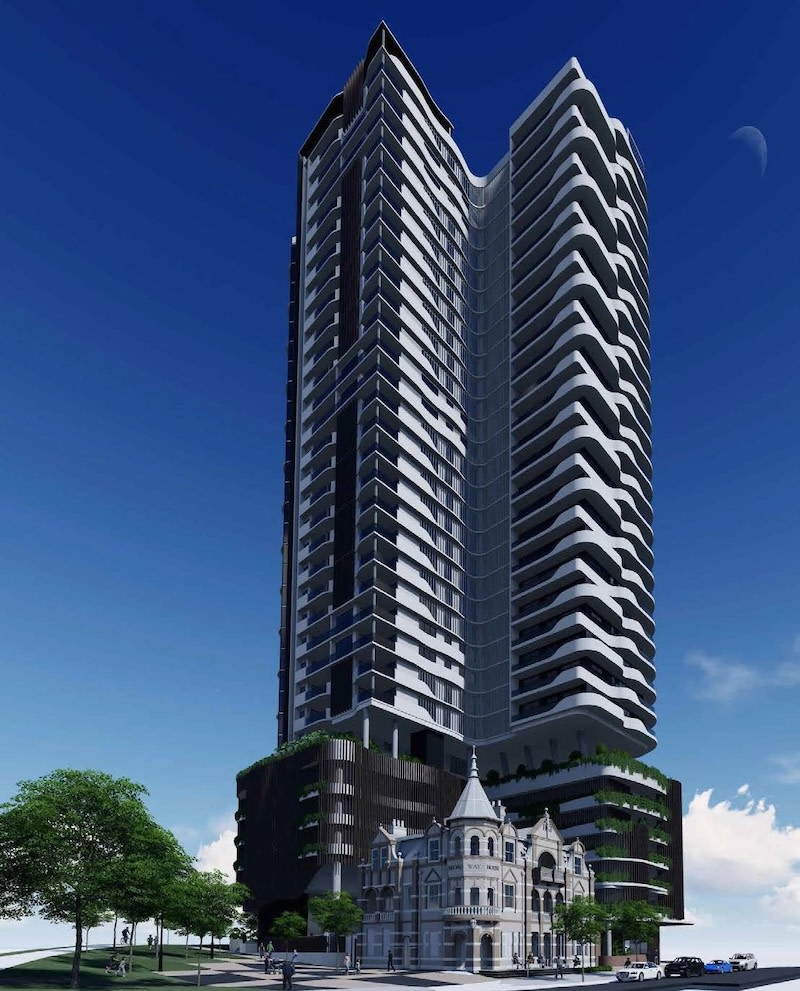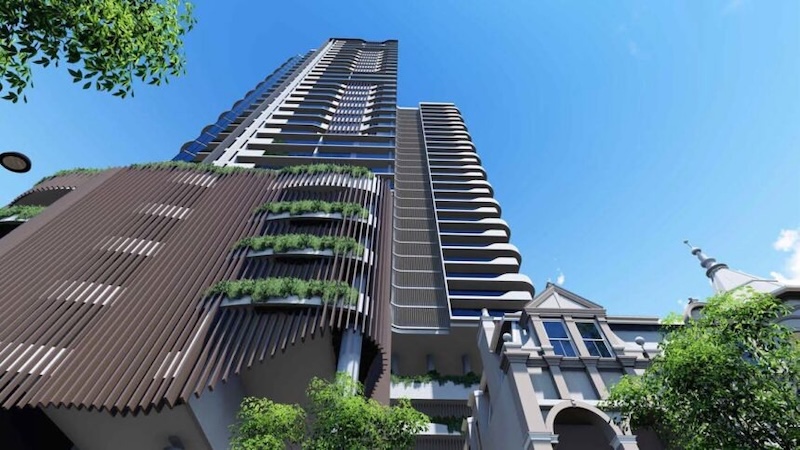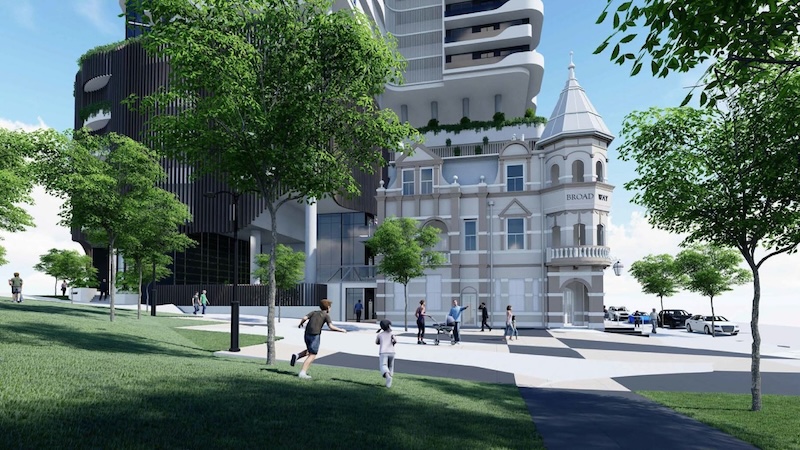Heritage Meets Highrise for Towering Gabba Pub Revival

It is a bold marriage of heritage and highrise.
And, of course, not a bad excuse to get the beer taps flowing again at a charred and long-derelict 136-year-old Brisbane pub.
Under new plans, inner-city Woolloongabba’s heritage-listed Broadway Hotel—gutted by fires in 2010 and 2018—would rise from the ashes as the cornerstone of a 34-storey residential tower proposal.
It integrates the restoration and revival of the dilapidated three-storey watering hole with a contemporary mixed-use highrise comprising 282 apartments, bar, function facilities and food and drink outlets.
The scheme designed by Red Door Architecture is a juxtaposition of old and new, with a deliberate void distinguishing the two buildings and discrete links via existing doorways in the hotel’s rear wall.
Second generation developer-builders Don and Tony Carbone—who four years ago paid $8.8 million for the 2507sq m site at 44 Balaclava Street and 93 Logan Road—are behind the proposal.
Overall, the proposed tower would accommodate a mix of 26 three-bedroom, 152 two-bedroom and 104 one-bedroom units, rising above a six-level podium and three-level basement.
A planning report said the scheme was designed “to be suitable for either a built-to-rent model of development or a standard development model”.
“The proposal provides an opportunity to achieve the restoration of a significant state heritage building to the benefit of the community,” the report said.
“The more recent changes to the [2032 Brisbane] Olympic venues combined with the increasing housing demand post Covid and the reported shortage of housing has brought forward the level of demand for apartment living at this location.”

Communal recreation spaces—including a pool, spa, yoga lawn, gym, cinema, business centre, lounge/games room, private dining area, wine cellar and rooftop garden—would cap the podium and tower.
As well, parking would be provided on-site for 275 cars.
The landmark Broadway Hotel was built in 1889-1890 in the Queen Anne architectural style with a prominent three-storey octagonal tower. After the fires, the State-heritage-listed hotel remained vacant and in a state of extreme disrepair for more than a decade.
A heritage impact statement painted a grim picture of the current state of the hotel building: roofless, flooded, vandalised and stripped of original joinery, stairs and windows—and deemed the proposal would return it to a fit and usable state and have “an overwhelmingly positive heritage impact”.
“The heritage listing and derelict condition of the building means that a significant capital investment is required to restore the building thus imposing a substantial additional cost burden upon development of the site,” the application said.
“This additional cost must be capable of being absorbed within the total project cost so as to ensure its commercial viability. The scale and nature of the associated development is therefore highly critical for this site and places this site in a somewhat unique scenario for its future development.
“Whilst the cost of restoration is a major impost, the restoration of this building will also offer a unique opportunity to create a landmark development which will provide a catalyst for the development of the surrounding locality.”

















